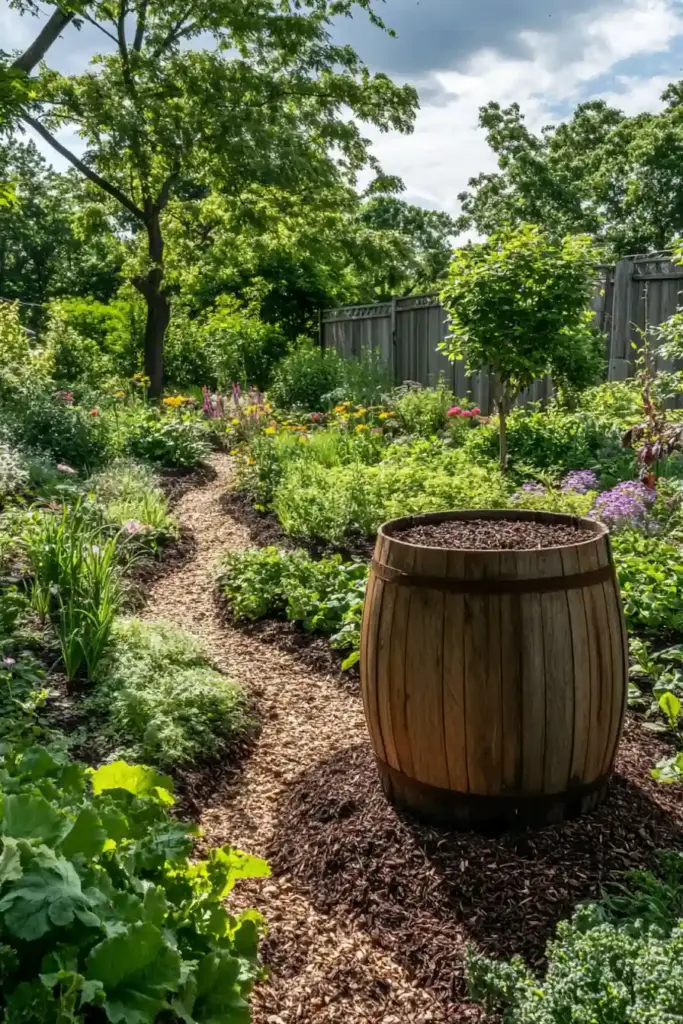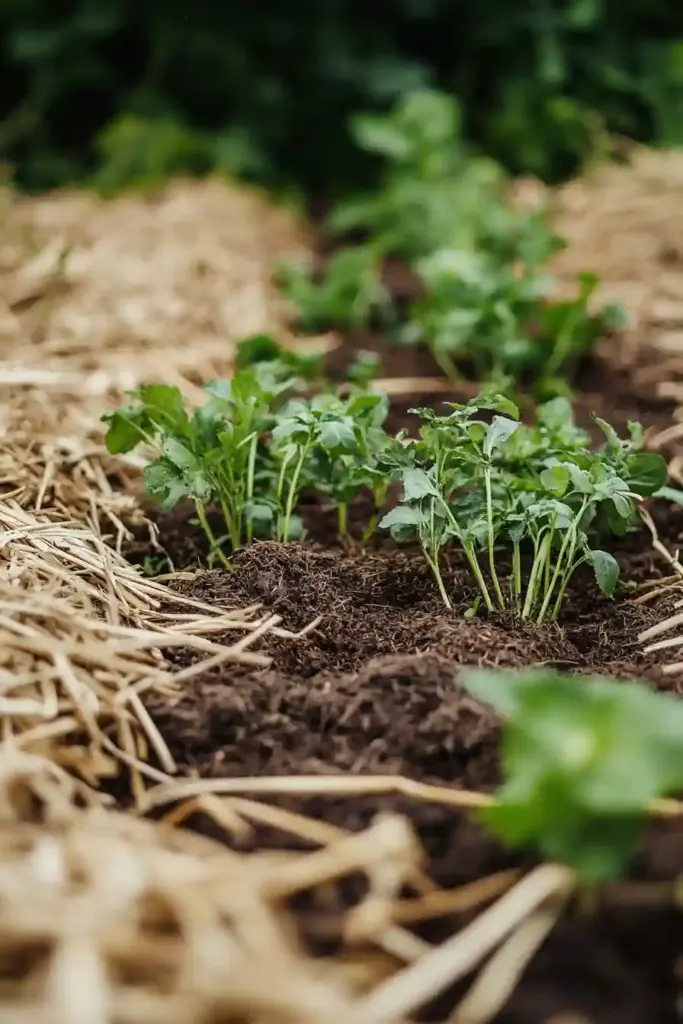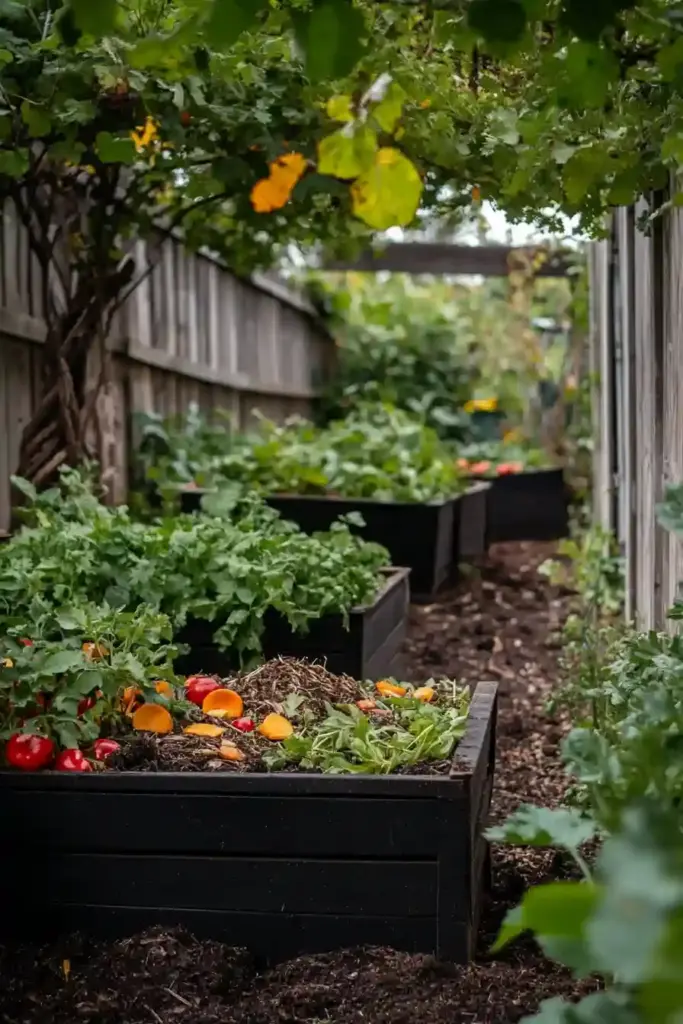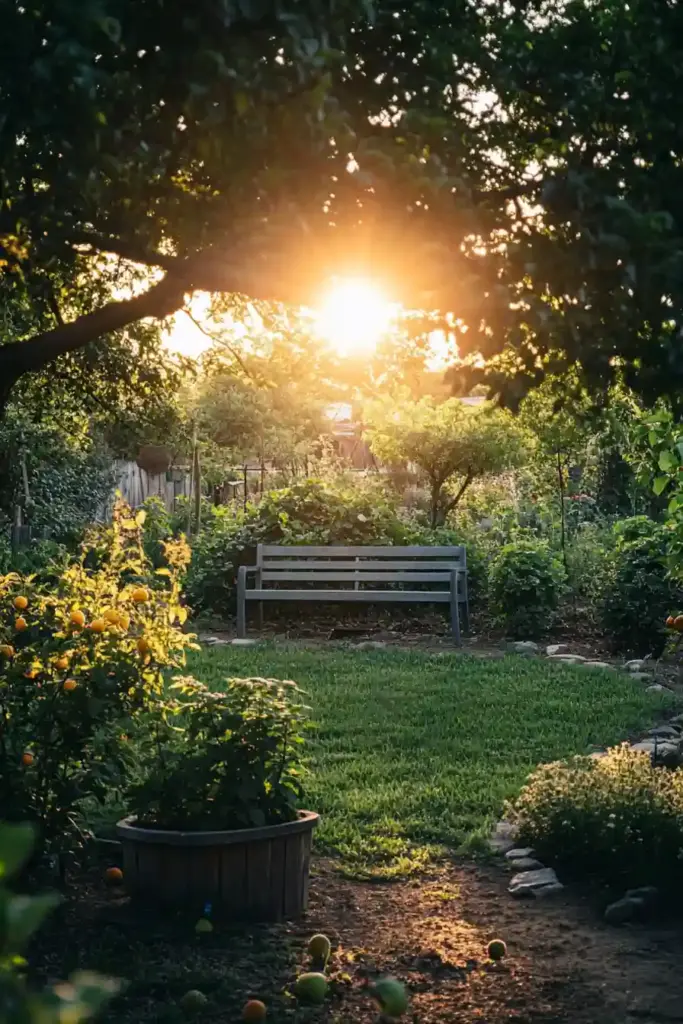Dreaming of a garden that practically takes care of itself while feeding your family and nurturing the environment? A permaculture garden might be exactly what you’re looking for. Rooted in nature-inspired design, permaculture blends sustainability with abundance—giving you a thriving, low-maintenance space that works in harmony with local ecosystems. Whether you’re working with a small urban plot or a larger backyard, this beginner-friendly guide will walk you through the key principles and actionable steps to help you start your own permaculture garden the right way.
🌿 What Is a Permaculture Garden?
A permaculture garden is more than just a collection of plants—it’s a thoughtfully designed system that mimics the balance and efficiency of natural ecosystems. The word “permaculture” blends “permanent” and “agriculture,” and at its core, it’s all about creating a long-term, sustainable growing environment that works with nature, not against it.
Instead of relying on synthetic fertilizers or heavy maintenance, permaculture encourages gardeners to observe natural patterns, use renewable resources, and foster biodiversity. The goal? A resilient, productive space that yields food, improves soil health, conserves water, and even supports local wildlife—all with minimal input over time.
In short, a permaculture garden doesn’t just grow food—it grows solutions for a healthier planet.
🌱 Core Principles of a Permaculture Garden

Permaculture is built around a set of design principles that help you create a self-sustaining garden ecosystem. These ideas encourage observation, efficiency, and collaboration between plants, people, and the environment. Here’s a breakdown of the key principles to guide your gardening journey:
🔍 1. Observe and Interact
Start by understanding your garden space—how the sun moves, where water flows, and what plants or animals already exist. Let nature be your teacher.
☀️ 2. Catch and Store Energy
Make the most of natural resources. Capture rainwater, utilize solar energy, and build healthy soil that retains nutrients and moisture.
🥕 3. Obtain a Yield
Design your garden to give back—whether it’s fresh produce, herbs, compost, or beauty. Every element should serve a purpose.
🔄 4. Apply Self-Regulation and Accept Feedback
Pay attention to what’s working—and what isn’t. Permaculture encourages ongoing learning and adapting.
🌾 5. Use and Value Renewable Resources
Choose materials and practices that reduce reliance on non-renewable inputs. Compost, mulch, and solar power are all great examples.
♻️ 6. Produce No Waste
In nature, there’s no such thing as “waste.” Compost organic scraps, repurpose materials, and keep nutrients in circulation.
🌀 7. Design from Patterns to Details
Start with a broad plan based on natural patterns (like water flow or sunlight), then refine with specific plant choices and layout tweaks.
🌿 8. Integrate Rather Than Segregate
Plant combinations should work together—not in isolation. For example, companion planting brings mutual benefits like pest control and better growth.
🐌 9. Use Small and Slow Solutions
Think gradual improvements rather than quick fixes. Healthy ecosystems take time to establish, but they’re worth the patience.
🌼 10. Use and Value Diversity
Biodiversity boosts resilience. Grow a variety of plants to reduce risk and attract beneficial insects and pollinators.
🌾 11. Use Edges and Value the Marginal
Transitional spaces—like fence lines or garden edges—often support surprising productivity. Make use of these underappreciated zones.
🔄 12. Creatively Use and Respond to Change
Nature is constantly evolving, and your garden should too. Stay flexible and ready to innovate.
🌼 Benefits of a Permaculture Garden
A permaculture garden offers more than just food—it nurtures a more balanced, eco-friendly lifestyle. Whether you’re a seasoned gardener or just getting started, here are some of the powerful benefits that make this approach so appealing:
🌍 1. Environmental Sustainability
Permaculture gardens work in harmony with nature, reducing the need for synthetic chemicals, heavy watering, and energy-intensive maintenance. The result? A smaller ecological footprint and a more sustainable future.
🌱 2. Healthier Soil
By using compost, mulch, and diverse plantings, permaculture builds up soil health over time. Healthy soil means stronger plants, better moisture retention, and increased fertility without relying on store-bought fertilizers.
💧 3. Efficient Water Use
Rainwater harvesting, swales, and strategic plant placement all contribute to better water conservation. Permaculture gardens are designed to store water in the soil and minimize evaporation, making them drought-resilient.
🐝 4. Supports Biodiversity
A rich mix of plants attracts pollinators, birds, and beneficial insects—creating a dynamic, living ecosystem. Biodiversity helps your garden become more resilient to pests and disease.
🌾 5. Low Maintenance Over Time
While a permaculture garden takes thoughtful planning upfront, it becomes increasingly self-sustaining. The more your ecosystem matures, the less work it takes to maintain.
🍅 6. Fresh, Homegrown Food
You’ll enjoy a steady supply of nutrient-rich vegetables, fruits, and herbs right outside your door—grown without harmful chemicals and tailored to your family’s needs.
🧘 7. Mindful and Rewarding Lifestyle
Tending a permaculture garden encourages mindfulness, observation, and connection with the natural world. It’s a great way to slow down and live with purpose.
With benefits like these, it’s easy to see why more gardeners are turning to permaculture as a holistic, future-forward way to grow.
🛠️ How to Create a Permaculture Garden: Step-by-Step
📍 1. Start with Site Analysis and Smart Design
Before planting anything, take time to observe your space:
- Track the path of the sun throughout the day.
- Note water flow during rainfall.
- Identify windy areas, shade, and microclimates.
- Test your soil texture and drainage.
Then, design your garden based on zones of use:
- Zone 1: Closest to your home – herbs, veggies, things you use daily.
- Zone 2: Fruits, chickens, compost – accessed regularly but not every day.
- Zones 3–5: Perennial crops, woodlots, or wild spaces – progressively less frequent interaction.
Smart design upfront means less work and more reward later.
🌱 2. Build Soil Health Naturally

Healthy soil is the foundation of any garden—especially in permaculture. Improve yours with:
- Compost: Recycle kitchen and garden waste into rich organic matter.
- Mulch: Apply a thick layer of straw, wood chips, or leaves to retain moisture and suppress weeds.
- Cover Crops: Grow clover, vetch, or buckwheat to add nutrients and organic matter.
Avoid synthetic fertilizers. Instead, feed the soil, and the soil will feed your plants.
💧 3. Practice Thoughtful Water Management

Permaculture emphasizes capturing and using water efficiently:
- Install rain barrels to collect roof runoff.
- Dig swales or basins along slopes to slow water flow and let it soak in.
- Mulch heavily to reduce evaporation.
- Group plants with similar water needs together to avoid overwatering or waste.
Think of water as a precious resource—and design your garden to make the most of every drop.
🌸 4. Choose the Right Plants (and Place Them Wisely)

Diversity is key! Mix plants that support each other:
- Nitrogen-fixers (like peas and beans) boost soil fertility.
- Perennials (like asparagus, rhubarb, and berry bushes) require less maintenance year after year.
- Pollinator-attractors (like lavender, yarrow, and nasturtiums) support ecosystem health.
- Herbs and aromatics deter pests while adding culinary value.
Use companion planting strategies and avoid monocultures. Every plant should have a role—whether it’s producing food, supporting soil health, or attracting beneficial insects.
🍂 5. Mulching and Ground Covers: Nature’s Blanket

In a permaculture garden, bare soil is a no-go. Why? Because nature never leaves soil uncovered—and for good reason.
Benefits of Mulch:
- Retains moisture by slowing evaporation
- Suppresses weeds naturally
- Builds soil health as it breaks down
- Regulates soil temperature
- Feeds soil microbes and earthworms
Best Mulching Materials:
- Straw or hay (untreated)
- Shredded leaves
- Wood chips or bark
- Grass clippings (in thin layers)
- Cardboard (as a base layer for sheet mulching)
Bonus Tip: Use living mulches like clover or creeping thyme. These low-growing plants protect the soil, attract pollinators, and can even fix nitrogen!
🐓 6. Integrating Animals into Your Permaculture System
Animals aren’t just cute—they’re ecosystem partners in a permaculture setup. With a little planning, they can reduce your workload while improving soil fertility and pest control.
🐔 Chickens:
- Eat garden pests like slugs and insects
- Scratch and aerate soil (especially in fall or between plantings)
- Produce nutrient-rich manure
- Help compost by turning piles and eating food scraps
🦆 Ducks:
- Excellent slug and snail hunters
- Gentler on garden beds than chickens
🐝 Bees:
- Essential pollinators
- Support fruiting and flowering in your garden
🐇 Rabbits & Goats (in larger systems):
- Provide manure
- Can be used to control invasive weeds
Just remember: animals need shelter, fresh water, protection from predators, and rotational access to various garden zones so they don’t overgraze.
♻️ 7. Composting and Waste Management: Close the Loop

In nature, nothing is wasted—and your permaculture garden should follow the same rule. Composting is a key way to turn waste into valuable, nutrient-rich soil.
🍌 What You Can Compost:
- Vegetable and fruit scraps
- Coffee grounds and filters
- Eggshells
- Grass clippings and leaves
- Garden trimmings
- Shredded paper and cardboard
❌ What to Avoid:
- Meat, dairy, and oily foods
- Diseased plants
- Pet waste (unless hot composting)
🐛 Composting Options:
- Traditional compost pile: Best for large gardens.
- Tumbler bin: Great for small spaces and faster results.
- Vermicomposting (worm bins): Perfect for indoor or patio setups. Red wigglers break down food scraps into “black gold.”
Add your compost back into beds to boost fertility, feed microbes, and reduce your household waste. It’s a triple win.
📚 8. Continuous Learning and Adaptation

Permaculture isn’t a “set it and forget it” method—it’s a living system that evolves over time. The more you observe and engage with your garden, the better it gets.
Here’s how to keep growing your skills:
- Keep a garden journal to record changes, what worked, and what didn’t.
- Join local permaculture groups or workshops for inspiration and support.
- Read permaculture books and blogs to explore advanced topics.
- Experiment slowly—introduce new plants or techniques in small ways to see how they perform.
Mistakes are just part of the learning curve. With time, your garden will become smarter, more productive, and easier to manage.
Next, I’ll share a quick case example using chickens, to show how permaculture principles come together in action. Let me know when you’re ready—just say “continue”! 🐣🌾
🐔 Chickens in a Permaculture Garden: A Living Example

In permaculture, every element in the system should serve multiple functions—and chickens absolutely deliver on that.
Here’s how these feathery friends contribute to a thriving garden ecosystem:
🐛 1. Natural Pest Control
Chickens love to snack on insects, slugs, snails, and larvae. Letting them forage in garden beds (especially in off-seasons) helps reduce pest populations without harmful sprays.
💩 2. Soil Fertilization
Chicken manure is high in nitrogen—great for building healthy soil. If managed properly (composted or diluted), it can be added to garden beds for a rich nutrient boost.
🌾 3. Weed Management
Chickens happily eat weed seeds and small shoots. By rotating them through garden zones, you can keep unwanted plants in check.
♻️ 4. Composting Help
Let your flock loose on the compost pile! Chickens stir the pile as they scratch and peck, speeding up decomposition and helping break down kitchen scraps.
🍎 5. Orchard Cleanup
Got fruit trees? Chickens can patrol underneath, cleaning up fallen fruit (which attracts pests) while fertilizing the soil and aerating it with their scratching.
🔄 Integration Tips:
- Use mobile chicken tractors to control where they forage.
- Give them access to garden zones after harvests or in areas needing soil improvement.
- Provide shelter, shade, and clean water for a healthy flock.
Chickens beautifully illustrate the “integrate rather than segregate” principle. They’re not just pets—they’re partners in creating a self-sustaining garden.
🌟 Conclusion: Start Small, Grow Big

Creating a permaculture garden is more than just a gardening method—it’s a mindset shift. By working with nature instead of against it, you can build a garden that produces abundant harvests while restoring the soil, conserving water, and supporting local wildlife.
You don’t have to transform your entire space overnight. Start with one bed, plant some companion crops, mulch heavily, and watch how even small changes make a big impact. Observe, experiment, and evolve with your garden—it’ll teach you as much as you nurture it.
Whether you’re growing food for your family or looking to live more sustainably, a permaculture garden is one of the most rewarding paths you can take. Happy growing! 🌻


